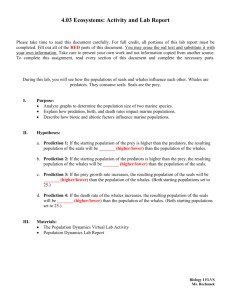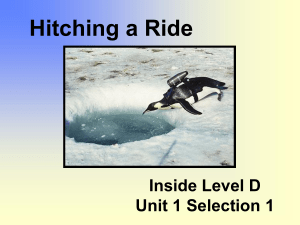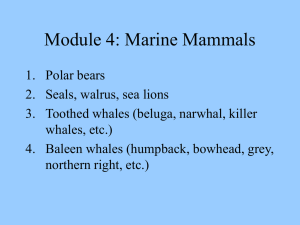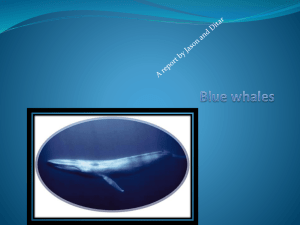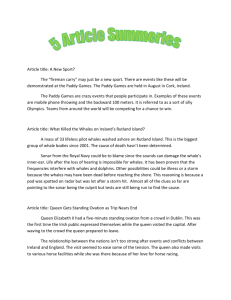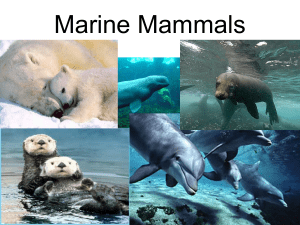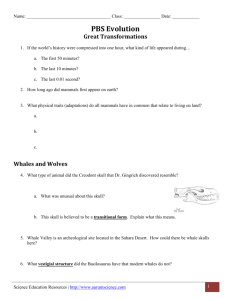Table 1: Predation and Carrying Capacity
advertisement
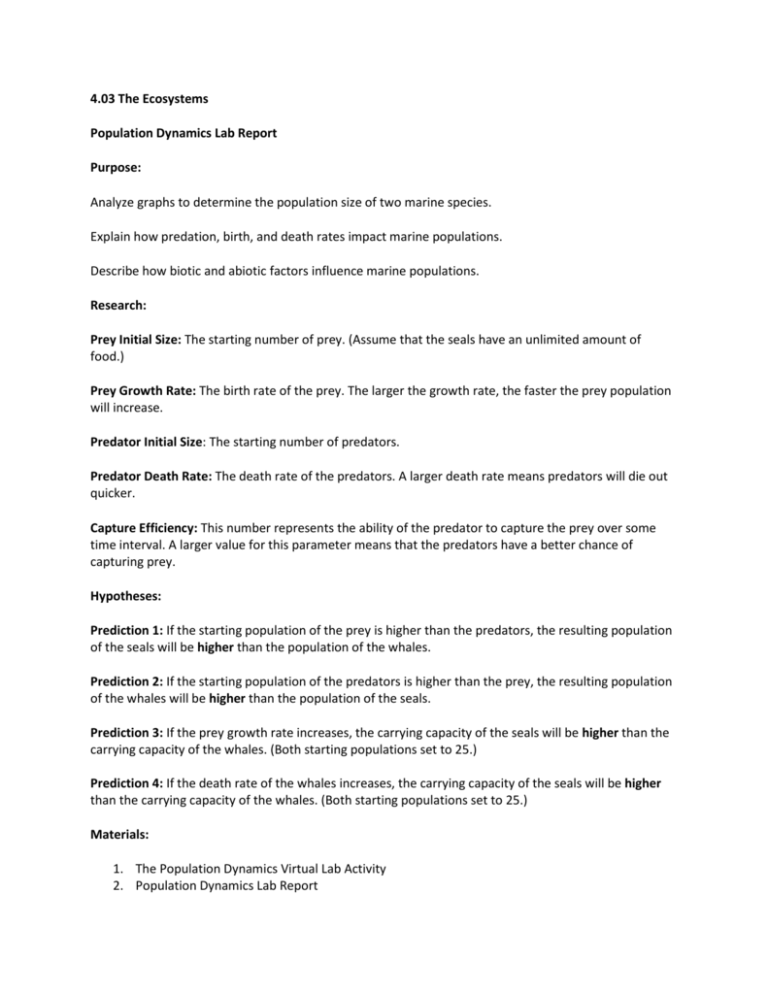
4.03 The Ecosystems Population Dynamics Lab Report Purpose: Analyze graphs to determine the population size of two marine species. Explain how predation, birth, and death rates impact marine populations. Describe how biotic and abiotic factors influence marine populations. Research: Prey Initial Size: The starting number of prey. (Assume that the seals have an unlimited amount of food.) Prey Growth Rate: The birth rate of the prey. The larger the growth rate, the faster the prey population will increase. Predator Initial Size: The starting number of predators. Predator Death Rate: The death rate of the predators. A larger death rate means predators will die out quicker. Capture Efficiency: This number represents the ability of the predator to capture the prey over some time interval. A larger value for this parameter means that the predators have a better chance of capturing prey. Hypotheses: Prediction 1: If the starting population of the prey is higher than the predators, the resulting population of the seals will be higher than the population of the whales. Prediction 2: If the starting population of the predators is higher than the prey, the resulting population of the whales will be higher than the population of the seals. Prediction 3: If the prey growth rate increases, the carrying capacity of the seals will be higher than the carrying capacity of the whales. (Both starting populations set to 25.) Prediction 4: If the death rate of the whales increases, the carrying capacity of the seals will be higher than the carrying capacity of the whales. (Both starting populations set to 25.) Materials: 1. The Population Dynamics Virtual Lab Activity 2. Population Dynamics Lab Report Procedures: The procedures are listed in Population Dynamics Virtual Lab Activity. You do not need to include them here. Data and Observations Table 1: Predation and Carrying Capacity Starting Seal Starting Whale Highest Seal Highest Whale population population Population Population Trial 1 25 25 49 52 Trial 2 50 25 72 80 Trial 3 25 200 160 179 Table 2: Growth Rate and Capture Efficiency Seal Whale Highest Seal Highest Whale birth rate birth rate Population Population Trial 1 0.05 0.005 49 52 Trial 2 0.09 0.005 52 73 Table 3: Death Rate and Capture Efficiency Whale death Whale capture Highest Seal Highest Whale rate efficiency Population Population Trial 1 0.05 0.005 49 52 Trial 2 0.09 0.005 68 57 Analysis and Conclusion: Be sure to answer the following reflection questions in the conclusion of your lab report: 1. Using Table 1, which of the three trials produced the highest population for both the whales and the seals? Why do you think this trial had the best outcome for the whale and seal populations? In the charts above, trail 3 has the highest amount of carrying capacity for both whales and seals because the whale population was a lot higher than the seal population. 2. Using Table 2 and 3, explain how the birth rates of the seals and the death rates of the whales affected the population for both whales and seals. Whales are the predators of the seals, meaning that if the death rate of whales is higher, then the seals population will rise. This means that the carrying capacity of the seals will be higher than that of the whales. 3. Climate change (an abiotic factor) has slowly decreased habitat for the arctic seals. Predict how a reduction in habitat could change the capture efficiency of the killer whales. How would this affect the carrying capacities for both the whales and the seals? Taking away their habitat of the seals will limit their population and as a result, whales will find it harder to find food. This can affect the carrying capacity for both the seals and the whales. The seals’ carrying capacity will lower because they won’t have much amount of lad and they also have a low population. 4. If another source of prey were available to the whales, what changes in population size would you expect for the seals and the whales? If there was another type of prey the whales could eat, the seals’ population might slightly increase while the whales’ population will increase exponentially. 5. In this lesson, you learned about two patterns of population growth and decline, the sigmoid and peak phenomena. Does the seal and killer whale relationship represent a sigmoid or peak phenomenon? Please provide supporting details. The killer whale and seal relationship could represent peak phenomena. This is because when the seal population is high, the whale population will increase as well and due to this, the seal population will decrease. 6. What are the limitations of the population dynamics lab? Is the lab activity a realistic representation of an arctic marine ecosystem? Note: Please provide detailed support for your opinion. This lab was based on nature, but it is not so accurate nor realistic as real nature because we didn’t take environment changes, diseases, and other types of predators. As well as that whales have other food sources they could get instead of the seals.

